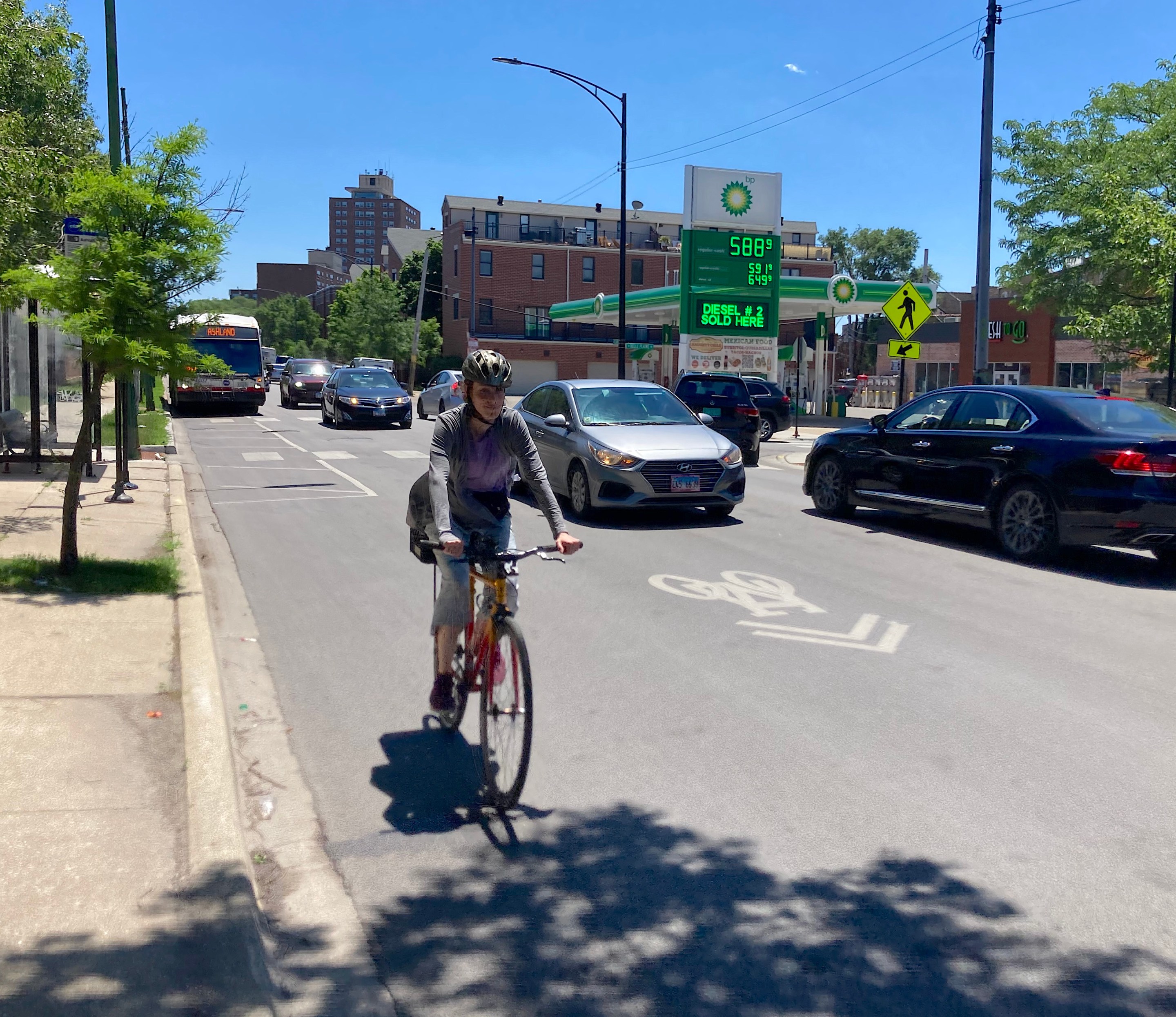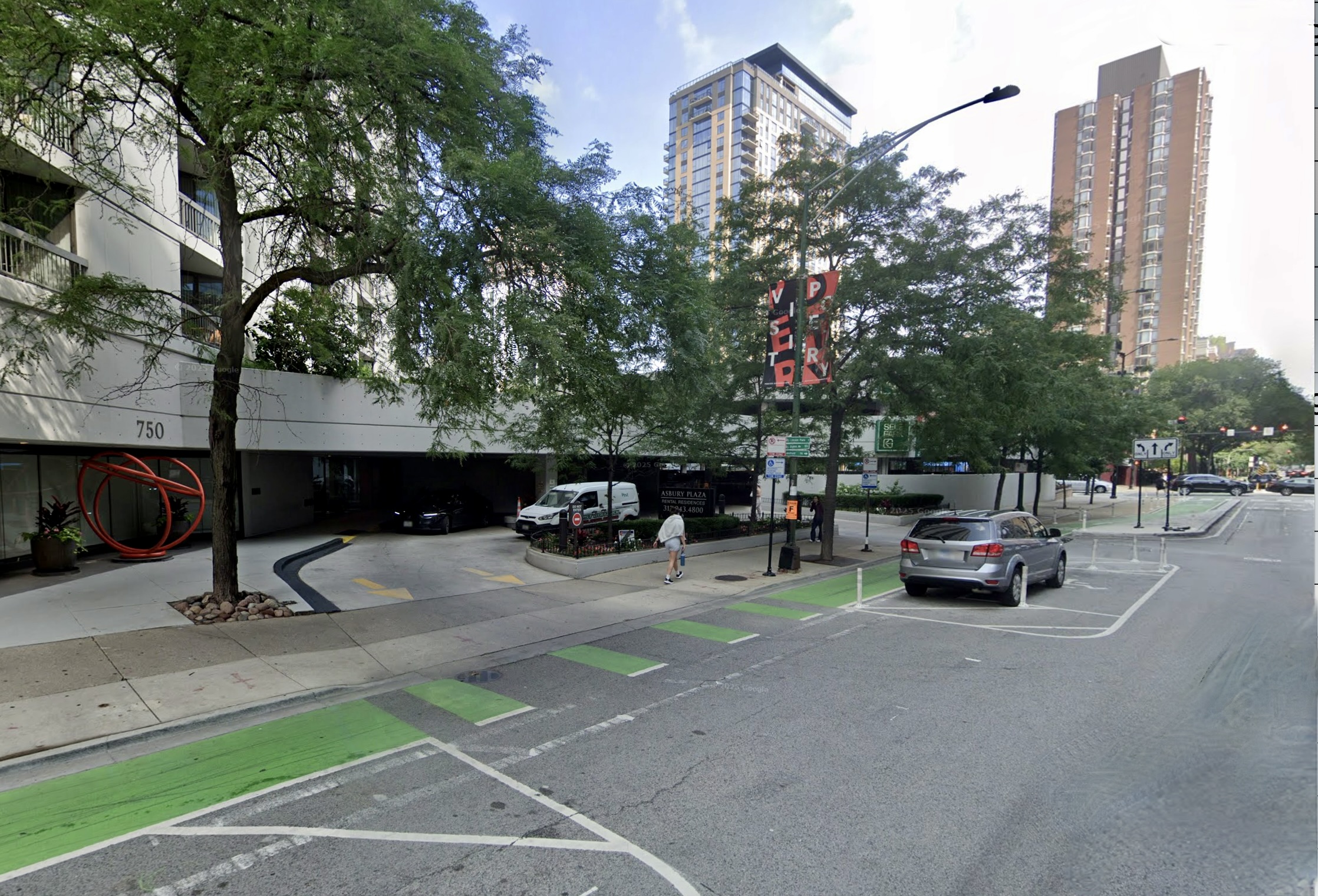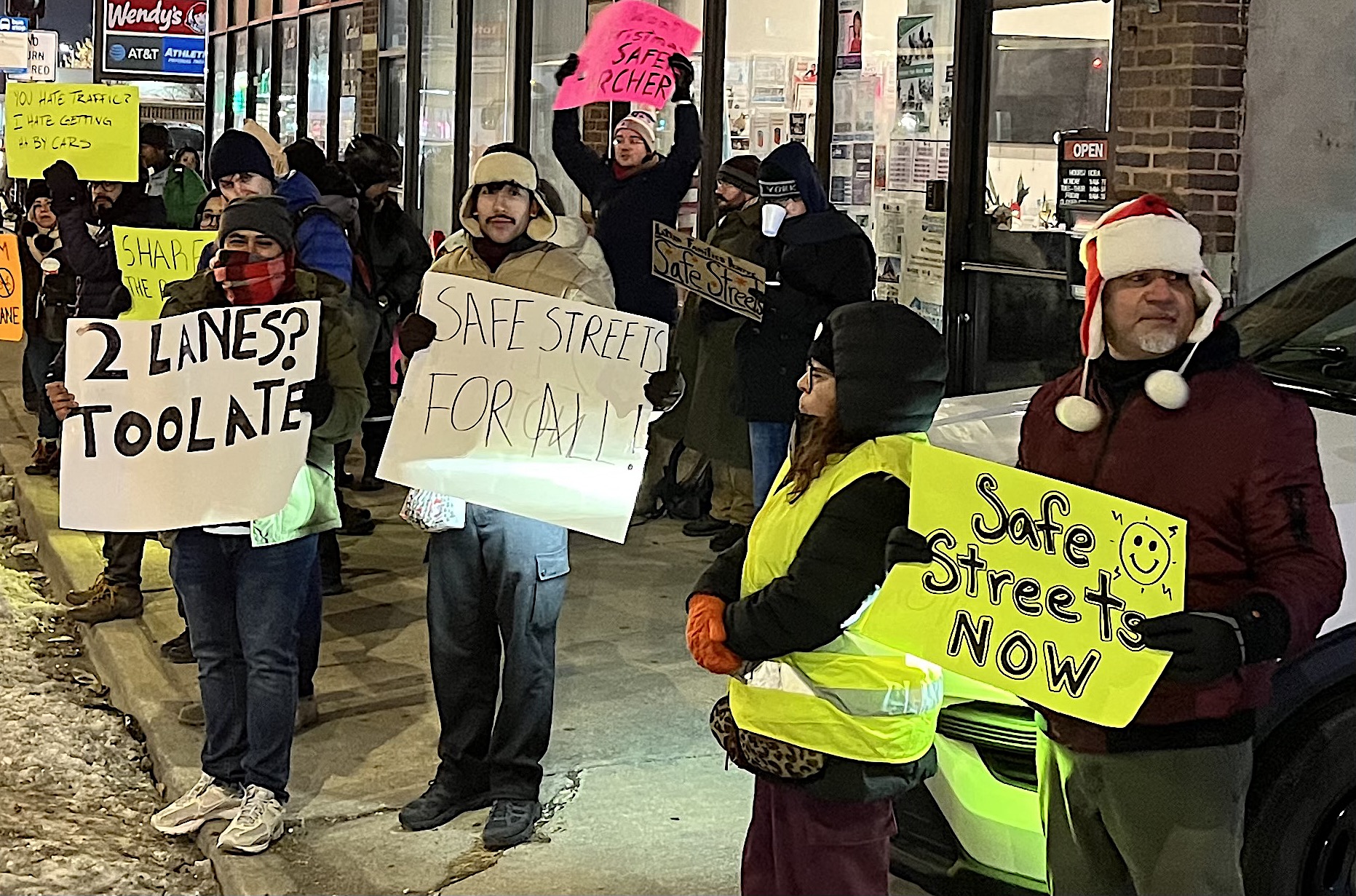North Side cyclists are excited about the news that a fraught stretch of Clark Street between Irving Park Road (4000 N.) and Montrose Avenue (4400 N.) is getting concrete-protected bike lanes. On Tuesday alderpersons James Cappleman (46th) and Matt Martin (47th) and Chicago Department of Transportation bike and pedestrian program manager David Smith hosted a community meeting on the project. Martin said he's frustrated that ward boundaries play a larger role than they should when it comes to bike infrastructure, and that recent deaths of vulnerable road users in and around the 47th ward highlight the need for a comprehensive approach to pedestrian and bike safety. Cappleman said he's looking forward to the new bike lanes given that he “cycles everywhere.”
Smith began by saying the project is a “Complete Streets” redesign in that the changes will benefit all road users, no matter their mode. Residents along the corridor have voiced concerns about speeding and traffic safety in general. During a 24-hour period, CDOT observed 1,600 out of 13,000 drivers were speeding. The top recorded speed was 55 mph. This is highly concerning given the likelihood of serious injuries and death increases with vehicle speeds. As part of the project, new 20 mph speed limit signs will be installed.
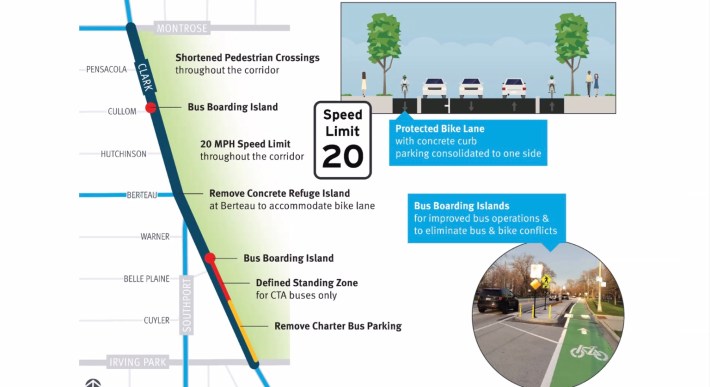
In order to make room for concrete curb-protected bike lanes on both sides of Clark, parking will be stripped from the east side of the street, next to Graceland Cemetery. As is often the case when car storage is to be converted to more productive uses of the public way, there are some concerns from neighbors, especially when it comes to parking on Cubs game days. But pedestrian and cyclist safety will take precedence over preserving parking spaces.
There are 100 car parking spots along Clark between Irving Park and Montrose. CDOT observed that fewer than half are used during a typical day. Meanwhile about two-thirds of the parking spaces on the residential cross streets are occupied on an average day. Permit parking restrictions side streets will remain in place. Currently charter buses are parked on the east side of Clark near Irving Park during ballgames, but the bus parking area will be relocated to Irving Park instead.
CDOT will be working to ensure there will be clear sight lines. A number of attendees voiced concerns about drivers being able to maneuver into the bike lane at the intersections despite the concrete curb.
CDOT will also build bus-boarding islands. This will help eliminate the need for bus operators to pull over to the curb. That will eliminate conflicts with cyclists and speed up bus service a bit. The islands will be placed at Cullom (4300 N.) and Belle Plaine (4200 N.) avenues. The department will add a designated standing zone for the #9 Ashland bus just south of the Belle Plaine island.
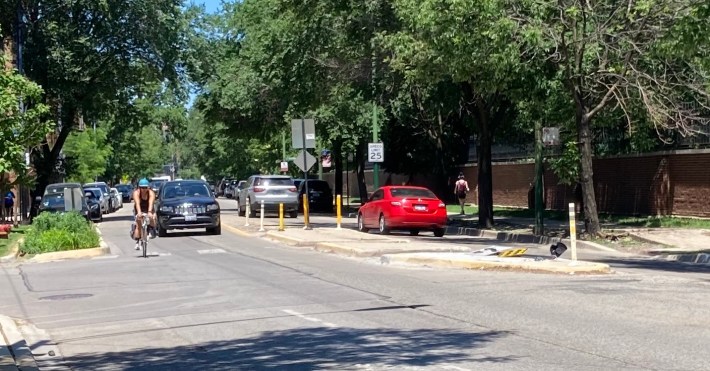
Cyclists will rejoice that the concrete pedestrian island at Berteau will be removed to make space for the bike lanes. Currently the pedestrian island acts as a pinch point for cyclists. For those concerned about pedestrian safety, Smith said the protected bike lanes will help shorten pedestrian crossing distances along the corridor.
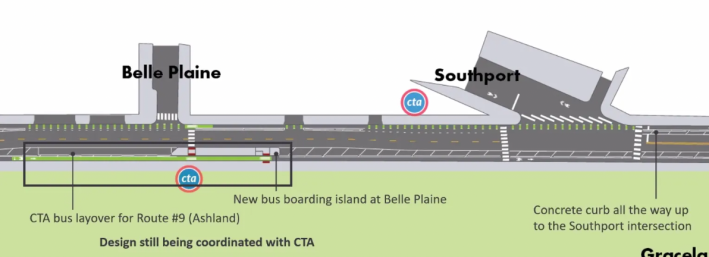
Chicagoans are encouraged to email cdotbikes[at]cityofchicago[dot]org to provide feedback on the plan over the next two weeks. The project is expected to start later this year. A replay of the virtual presentation and meeting materials will be posted on CDOT’s Complete Streets website.
Given that Clark was designated as a spoke route in the city’s Streets for Cycling Plan 2020, it’s nice to see a well-trafficked portion receive protected bike lanes. According to Smith, CDOT is reviewing the entire length of Clark Street, looking for more opportunities to improve the cycling experience. While that’s encouraging news, the specter of aldermanic privilege – the ability of City Council members to veto projects in their wards – stalling progress on prioritizing bike and transit on our streets still looms.
